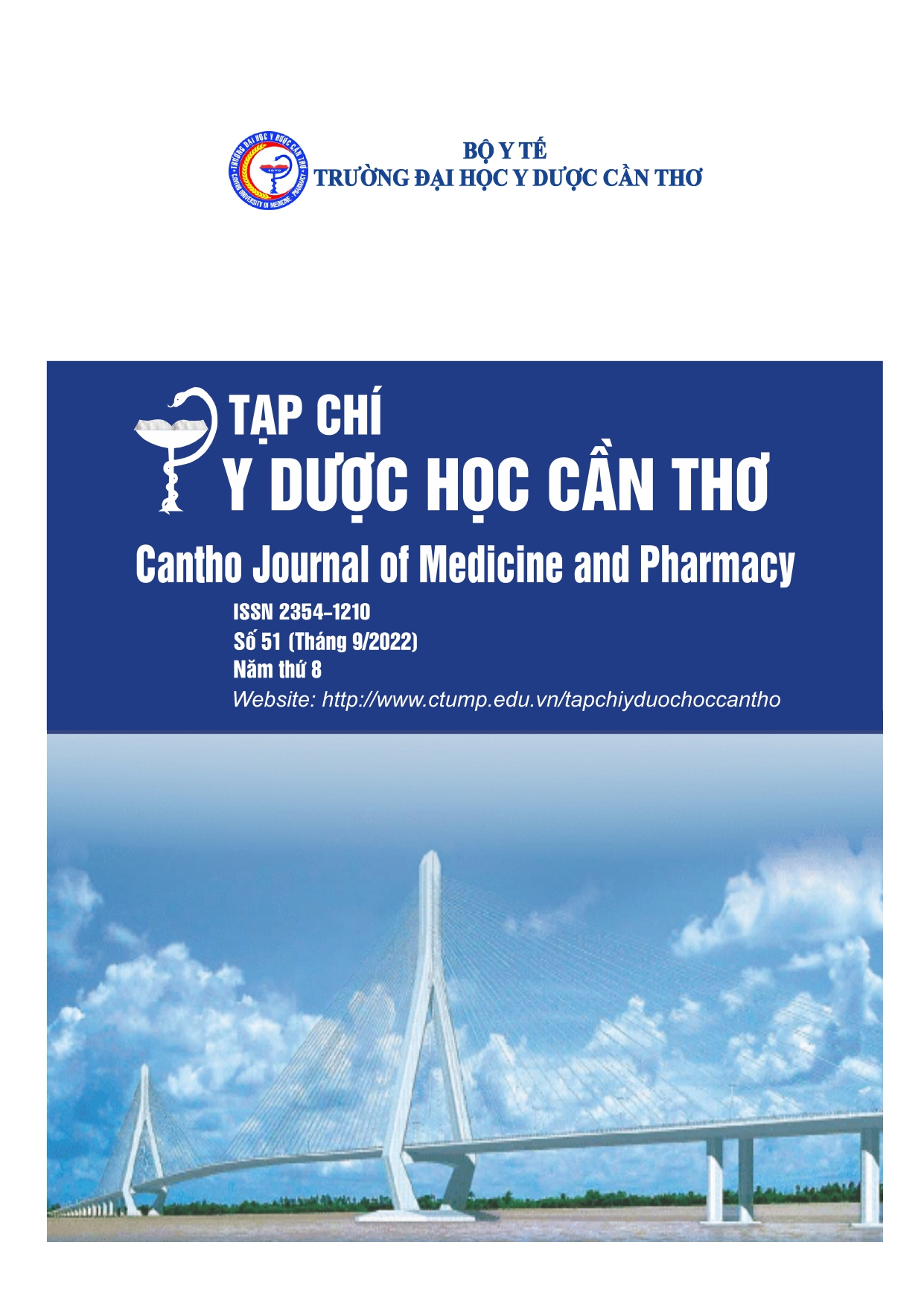HIGH PERFORMANCE LIQUID CHROMATOGRAPHY AND CAPILLARY ELECTROPHORESIS METHODS FOR HbA1c MEASUREMENT IN HEMOGLOBINOPATHY
Main Article Content
Abstract
Background: In normal hemoglobin, there was no significant difference between the results obtained from both ion exchange High Pressure Liquid Chromatography (HPLC ion exchange) and Capillary Electrophoresis (CE). We do this research for comparison of HbA1c measurement methods between HPLC ion exchange and CE in hemoglobinopathy. Objectives: Comparison of the difference and compatibility of results between ion exchange high pressure liquid chromatography and capillary electrophoresis in HbA1c measurement on blood samples with hemoglobinopathy. Materials and methods: A cross-sectional descriptive study with analysis of 78 blood samples with abnormal hemoglobin at Can Tho Hematology blood transfusion Hospital and Can Tho University of Medicine and Pharmacy Hospital from April 2021 to February 2022. Results: Regarding the general characteristics of the study sample: Median of age was 20 (min 01, max 70), 43.6% blood samples were male and 56.4% were female. RBC was 5.12±1.11x1012/L, HGB was 110±27.6g/L, MCV was 70.9±9.39fL, MCH was 21.7±3.93pg. In this research, there were 23 samples of variant HbE, 13 samples of HbH and 42 samples of β-thalassemia. The different of HbA1c between HPLC and CE in total samples were -0.83±1.19(%), in group of variant HbE was -1.84±1.43(%), in group of HbH was -0.89±0.82(%), in group of β-thalassemia was -0.26±0.69(%); and incompatibility of results HbA1c assay. Conclusion: From this study, the different was -0.83±1.19(%), mean±SD of HPLC and CE was 4.25±1.25(%) and 5.08±0.56(%) respectively, p<0.05; incompatibility of results HbA1c measurement between HPLC and CE on blood samples with hemoglobinopathy.
Article Details
Keywords
Capillary Electrophoresis, HbA1c, hemoglobinopathy, HPLC
References
2. Phạm Thị Thanh Hương, Nguyễn Gia Bình, Đỗ Hồng Quảng và Nguyễn Văn Khoa (2018), “So sánh kết quả định lượng HbA1c bằng 4 phương pháp xét nghiệm thường dùng ở Việt Nam”, Tạp chí Y học Việt Nam, tập 470, tr.64-69.
3. Lê Thị Hoàng Mỹ (2018), “Nghiên cứu tần suất, đặc điểm thalassemia và các bệnh hemoglobin trong cộng đồng dân tộc người Khmer ở Đồng bằng sông Cửu Long”, Luận án Tiến sĩ, Đại học Y Hà Nội, tr.62.
4. Vũ Đình Trung, Lê Thị Hoàng Mỹ, Trương Công Khanh (2022), “Tổng quan về các phương pháp định lượng HbA1c”, Tạp chí Y Dược học Cần Thơ, số 45, tr.222-232.
5. Altawallbeh G, Makky VF, Saenger AK, Peter JM and Killeen AA (2020), “Evaluation of an Ion-Exchange HPLC Device for HbA1c Measurement”, The Journal of Applied Laboratory Medicine, 5(4), pp.695-703.
6. American Diabetes Association (2011), “Diagnosis and Classification of Diabetes Mellitus”, Diabetes care, 34(1), pp.62-69.
7. Bland JM, Altman DG (1983), “Measurement in Medicine: the Analysis of Method Comparison Studies”, The Statistician, 32, pp. 307-317.
8. Fucharoen S, Winichagoon P (1997), “Hemoglobinopathies in Southeast Asia: Molecular Biology and Clinical Medicine”, Hematology, 21(4), pp.299-319.
9. Gilani M, Aamir M, Akram A, Haroon ZH and Khadim MT (2020), “Comparison of Turbidimetric Inhibition Immunoassay, High Performance Liquid Chromatography, and Capillary Electrophoresis Methods for Glycated Hemoglobin Determination”, Lab Medicine, 51(6), pp.579-584.
10. Herpol M, Lanckmans K, Neyghem SV and et al. (2016), “Evaluation of the Sebia Capillarys 3 Tera and the Bio-Rad D-100 Systems for the Measurement of Hemoglobin A1c”, Am J Clin Pathol, 146(1), pp.67-77.
11. Ke P, Liu J, Chao Y, Wu X and et al. (2017), “Measurement of HbA1c and HbA2 by Capillarys 2 Flex Piercing HbA1c programme for simultaneous management of diabetes and screening for thalassemia”, Biochem Med (Zagreb), 27(3), pp.1-7.
12. Klingenberg O, Furuset T, Camilla RH, and et al. (2017), “HbA1c analysis by Capillary electrophoresis - comparison with chromatography and an immunological method”, Scandinavian Journal of Clinical and Laboratory Investigation, 77(6), pp. 458-464.
13. Rollborn N, Nordin G, Aleksandra MH, Lohmander M, Elmgren A and et al. (2019), “Good Agreement Between HbA1c Analyzed Using CE, HPLC, Immunological and Enzymatic Methods”, Journal of Diabetes, Metabolism and its Complications, 1(1), pp.1-7.
14. Weatherall DJ, Clegg JB (2001), “Inherited haemoglobin disorders: an increasing global health problem”, Bulletin of the World Health Organization, 79, pp.704-712.
15. Weykamp C. (2013), “HbA1c: a review of analytical and clinical aspects”, Annals of laboratory medicine, 33(6), pp.393-400.


